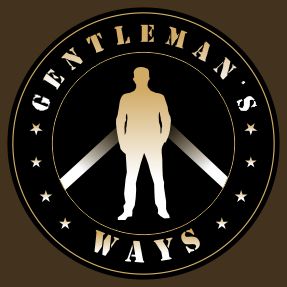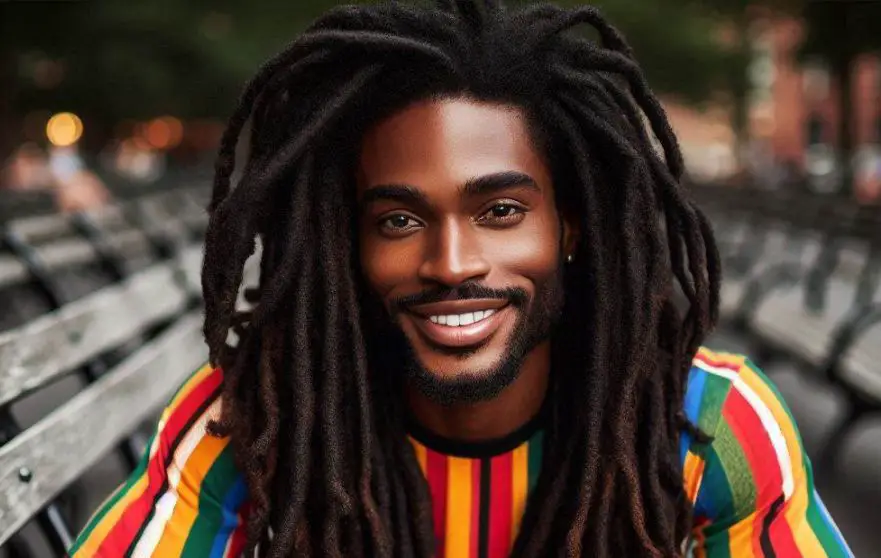Learn how to form, grow, maintain, and style the dreadlocks hairstyle, a hairstyle with deep cultural and spiritual significance in Black communities.
From ancient origins to contemporary styles, learn how to care for your locks using specialized products, and discover various styling options and maintenance routines to keep them healthy and vibrant.
Suggested: Trendy Hairstyles for Men
You may want to pin the image below.
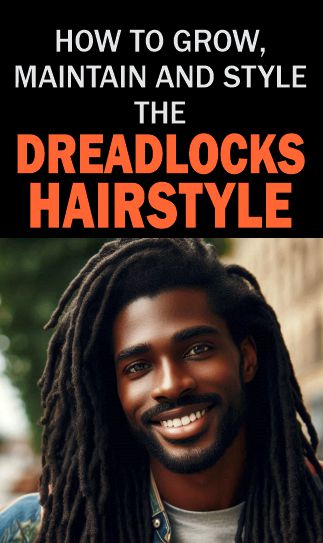
Key Takeaways
- Dreadlocks form by matting or knotting hair into rope-like segments through methods like freeform, twist and rip, or backcombing.
- Dreadlocks have ancient origins in Africa, symbolizing spiritual and cultural values.
- To maintain dreadlocks, use residue-free shampoos, natural oils, and perform regular retwisting and palm rolling to keep them neat and healthy.
- Dreadlocks offer many styling options, including freeform, neat buns, braids, and accessorized looks.
- Common issues with dreadlocks include dandruff and product build-up.
- For healthy dreadlocks, schedule trims, wash with suitable shampoos, moisturize the scalp, and ensure thorough drying to prevent mold and damage.
Recommended: Black Men’s Favorite Haircuts and Styles
Table of Contents
- Key Takeaways
- Introduction
- How Dreadlocks Forms and How to Grow It
- Dreadlocks Hairstyle by Birth
- Dreadlocks Hairstyle by Freeform
- Twist and Rip
- Dreadlocks by Backcombing
- Dreadlocks by Hair Products
- The Appeal for Dreadlocks Hairstyle
- Choosing the Right Dreadlocks Hairstyle Formation
- How Long Does it Take for Dreadlocks to Form?
- How Do You Maintain the Dreadlocks Hairstyle?
- Hair Care Products for Dreadlocks
- Common Dreadlocks Challenges and How to Overcome Them
- Styling Options for Dreadlocks for Men
- Long-Term Care and Health of Dreadlocks
- Retiring your Dreadlocks
- Frequently Asked Questions
- Conclusion
Introduction
The Dreadlocks hairstyle, popularly known as locks/ locs or dreads, is a unique and sacred hairstyle formed by matting and sectioning hair.
The history of dreadlocks has a spiritual inclination, and also stretches back to ancient civilizations in Africa and beyond, with some of the earliest depictions found in Egyptian artifacts.
Over centuries, this style has evolved, maintaining deep cultural and spiritual significance, particularly within Black communities.
Dreadlocks are not merely a hairstyle but often symbolize a commitment to various spiritual, cultural, and personal journeys.
AFFILIATE DISCLAIMER!
Some of the links in this article may be affiliate links, and that means we may receive a commission without additional cost to you if you purchase through the links. We only recommend products and services we trust would be beneficial to our readers.
Thank you for your support.
Locs in Modern Society

In contemporary society, the popularity of the dreadlocks hairstyle among Black men has surged due to the style’s uniqueness and the celebration of natural hair textures.
Alongside this rise, an increasing number of individuals seek reliable guidance on growing, maintaining, and styling their locks.
This guide aims to provide comprehensive information to support individuals through each stage of their dreadlock journey, from the initial process of locking the hair to everyday care and innovative styling tips.
Understanding the history of dreadlocks hairstyle is foundational to appreciating this iconic hairstyle.
As we go through this guide, we will discuss the methods for growing robust locks, maintenance routines that uphold their health and aesthetic appeal, and creative ways to style them, celebrating the cultural heritage and individual expression that dreadlocks embody.
Related: The Textured Crop Haircut
How Dreadlocks Forms and How to Grow It
Dreadlocks hairstyle forms when hair strands are matted or knotted together into rope-like segments.
It can form by birth, attributed to some spiritual powers that require rituals before barbing.
However, it can also form by deliberately allowing the hairstyle to grow without interference, twist and rip, or backcombing.
Before embarking on the journey of growing dreadlocks, it is paramount to ensure your hair is in optimal condition.
Clean and healthy hair creates the best foundation for dreadlocks, reducing complications and promoting smoother progress.
Regular washing and conditioning tailored to your hair type will fortify your strands against the stress of locking.
Here are the four ways dreadlocks can form:
- By birth
- Freeform
- Twist and rip
- Backcombing
Dreadlocks Hairstyle by Birth
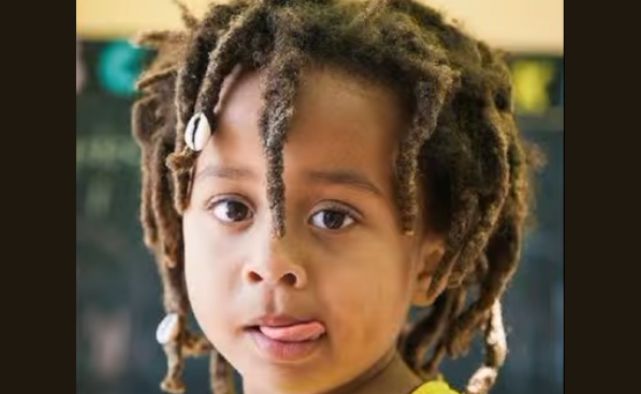
While many people choose to create dreadlocks through various methods, some individuals are born with hair that naturally forms into locks.
This phenomenon, often referred to as “dreadlocks by birth,” occurs when the hair naturally tangles and mats together, forming distinct locks without any external manipulation.
Understanding the Process
Dreadlocks by birth typically occur in individuals with highly textured or curly hair.
The unique structure of this hair type causes it to naturally coil and knot, leading to the formation of dreadlocks over time.
Unlike traditional dreadlocking methods, which may involve twisting, backcombing, or using products, dreadlocks by birth are entirely organic, growing and evolving with minimal intervention.
Cultural and Spiritual Significance
For many, dreadlocks by birth hold deep cultural and spiritual significance.
In some cultures, naturally formed dreadlocks are seen as a symbol of purity, strength, and a connection to one’s ancestry.
They are often embraced as a natural expression of one’s identity and heritage.
Caring for Naturally Formed Locs
Maintaining dreadlocks by birth requires a gentle approach. Regular cleansing with residue-free shampoos helps keep the scalp healthy while allowing the locks to develop naturally.
Since these locs form without external manipulation, they may vary in size and shape, giving each individual a unique and personal style.
If you are one of the few born with naturally forming dreadlocks, embrace them as a beautiful expression of your unique identity.
Celebrate the natural process and take pride in the organic beauty that your hair represents. Whether for cultural, spiritual, or personal reasons, dreadlocks by birth are a powerful reminder of the diversity and richness of human hair.
Related: Guide to Men’s Haircare Routine
Dreadlocks Hairstyle by Freeform
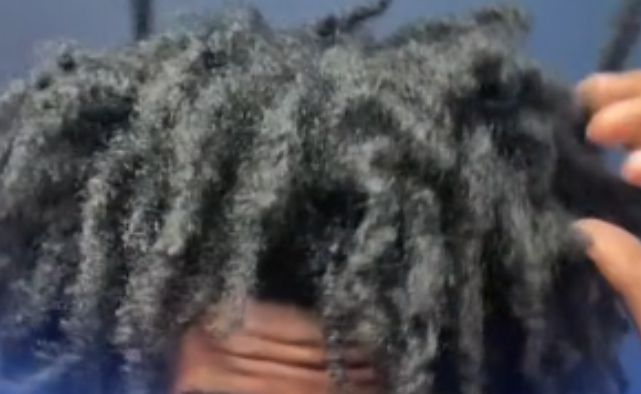
For a more organic route, the freeform method might be preferred. This technique entails minimal interference; the hair naturally mats and tangles over time.
Freeform dreadlocks are a natural, unstyled type of dreadlocks that develop organically without manipulation or specific maintenance routines.
Unlike traditional dreadlocks, which are often cultivated with regular grooming and maintenance, freeform dreadlocks are allowed to form naturally through minimal interference.
This means no retwisting or sectioning is done; instead, the hair is allowed to mat and lock up in its unique pattern.
The process can be slower and less predictable but results in a more authentic, personal appearance.
Freeform dreadlocks often reflect the wearer’s individual hair texture and growth patterns, creating a distinct and personalized style.
Related: The Buzz Taper Haircut
Twist and Rip
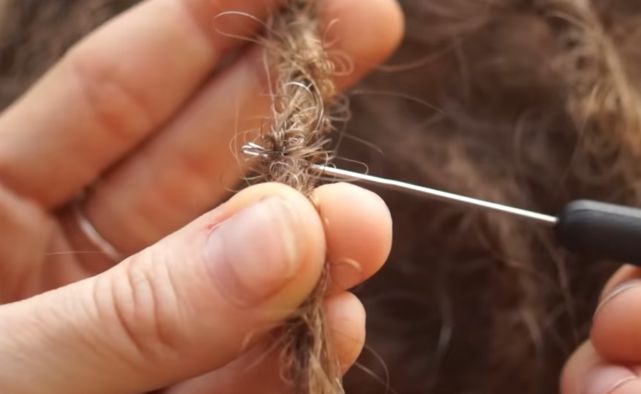
The Twist and Rip method is a popular technique for forming locs. It begins by sectioning the hair into desired parts. Each section is then twisted tightly, creating a spiral shape.
After twisting, the hair is gently pulled apart, or “ripped,” to encourage matting and knotting.
This method helps establish initial dreadlock formation and promotes the locking process.
The twist creates a structured base, while the rip action helps the hair to start locking together naturally.
It’s an effective technique for those looking to create dreadlocks with more control over the sectioning and formation, though maintenance is required to ensure the locks continue to form well.
Related: The Timeless Crew Cut Haircut
Dreadlocks by Backcombing
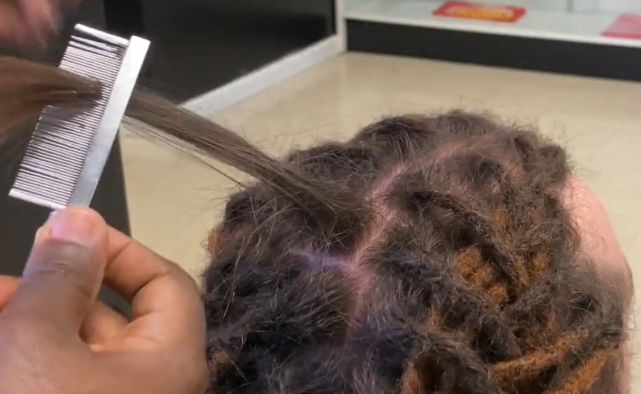
Backcombing is a technique used to create the dreadlocks hairstyle by reversing the natural growth pattern of the hair.
The process involves combing hair backward toward the scalp, creating tangles and knots that help the hair lock together.
Sections of hair are combed repeatedly to encourage matting, which eventually forms into dreadlocks.
This method provides a structured way to start the locking process and is often used in conjunction with other techniques like twisting or palm rolling to ensure the locks form uniformly.
Backcombing offers a controlled approach to creating locs, allowing for consistent results and a defined shape in the initial stages.
Recommended: The Buzz Cut
Dreadlocks by Hair Products
Creating the dreadlocks hairstyle with hair products involves using specific styling aids to assist in the formation and maintenance of the locks.
Key products include dreadlock wax or gel, which help to hold the hair together and promote matting.
To start, apply a small amount of product to dampened hair and work it through the sections where you want dreadlocks.
Use a comb to twist and shape each section, then secure the hair with the product to aid in locking. Regular application helps to maintain the shape and reduce frizz.
It’s important to use products specifically designed for dreadlocks to avoid buildup and ensure healthy formation.
Related: The Timeless Side Part Hairstyle
The Appeal for Dreadlocks Hairstyle
Dreadlocks offer numerous benefits, particularly for Black men, serving as a powerful medium for cultural expression and identity.
Cultural and Spiritual Belief
Throughout history, the dreadlocks hairstyle has been rooted in various cultures and spiritual beliefs, symbolizing strength, freedom, and a deep connection to heritage.
Wearing dreadlocks can be a profound statement of individuality and pride in one’s ethnic background.
Low Maintenance
Aside from cultural significance, the dreadlocks hairstyle is also known for its low-maintenance nature. Once formed, they require fewer interventions compared to other hairstyles, reducing the time spent on hair care routines.
This simplicity makes dreadlocks an attractive option for those seeking an easy-to-manage yet stylish hair solution.
Styling Flexibility
Furthermore, the dreadlocks hairstyle is incredibly versatile when it comes to styling. They can be worn loose or secured in various updos, buns, and braids, providing ample opportunities for creative expression.
Whether one prefers a neat, polished look or a more rugged, natural appearance, dreadlocks cater to many stylistic preferences, making them a highly adaptable and enduring hairstyle choice.
Choosing the Right Dreadlocks Hairstyle Formation
Choosing the appropriate size and type of dreadlocks is another crucial early step.
Traditional dreadlocks involve deliberate parting and maintenance, while freeform locks embrace a more natural aesthetic, forming without ordered sectioning.
Consider your lifestyle and desired final look when deciding between these approaches.
How Long Does it Take for Dreadlocks to Form?
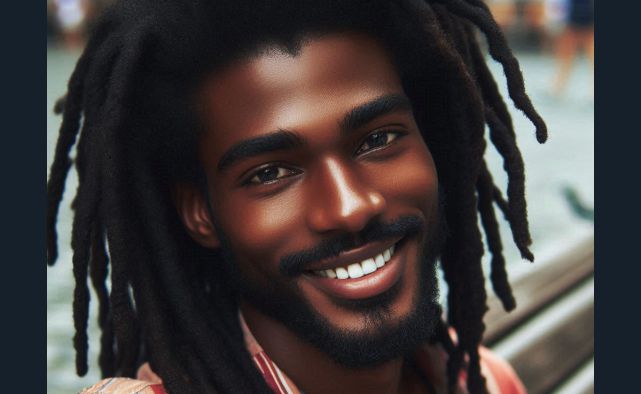
The timeline for hair to lock varies significantly based on hair type, the method used, and maintenance practices.
Dreadlocks begin to form within a few weeks but may take six months to a year to achieve a mature and uniform appearance.
Patience is key, as the journey to fully developed locks is gradual but rewarding.
How Do You Maintain the Dreadlocks Hairstyle?
Care for dreadlocks requires a specific approach and the use of specialized hair care products.
Residue-free Shampoos
Key products include residue-free shampoos, which prevent build-up or residue that may hinder the locking process, and natural oils, such as jojoba and tea tree oils, which keep the hair nourished and the scalp healthy.
Additionally, locking gels or butter can be useful to assist in the formation and maintenance of the locks, ensuring they hold their shape and desired texture.
Consistent care is necessary to keep the locks looking neat and prevent common issues like unraveling and frizz.
Washing and Cleaning
One of the foundational practices in dreadlocks hairstyle maintenance is washing and cleaning them regularly with products specifically designed for this style.
Utilizing residue-free and sulfate-free shampoos is crucial for dreadlocks, as they prevent product buildup that can weaken the locks and irritate the scalp.
Notable brands that offer suitable shampoos for dreadlocks include Dr. Bronner’s, Knotty Boy, and Jamaican Mango & Lime.
Retwisting and Palm Rolling
Frequent retwisting and palm rolling are effective techniques for maintaining the roots of your dreadlocks.
Retwisting involves reapplying tension to the new growth at the base of the locks, which helps to integrate it with the existing dreadlocks.
This method should ideally be done on damp hair to minimize breakage and discomfort. Palm rolling, on the other hand, is beneficial for smoothing out frizz and maintaining the cylindrical shape of the locks.
This technique involves rolling the lock between the palms of your hands, which helps to tighten and compress the strands, creating a more uniform appearance.
Managing New Growth
As your dreadlocks grow, managing new growth is another key aspect of maintenance. Incorporating the new hair with the established locks requires patience and regular attention.
When new growth is not effectively dealt with, it can lead to the formation of loose hairs and an untidy appearance.
Regular retwisting sessions help to manage new growth effectively, blending it seamlessly with the older locks.
Additionally, using natural oils such as coconut oil, jojoba oil, or castor oil can keep the scalp moisturized, which promotes healthy hair growth.
Ensuring that your dreadlocks are consistently maintained through these practices will not only enhance their appearance but also contribute to their overall health.
With the right approach, maintaining dreadlocks becomes a manageable process that promotes long-term durability and aesthetic appeal.
Hair Care Products for Dreadlocks
Maintaining a healthy dreadlocks hairstyle requires a careful selection of hair care products that are specifically designed to meet the unique needs of this hairstyle.
Shampoos
First and foremost, choosing the right shampoos and cleansers is critical. Unlike conventional hair, dreadlocks benefit from residue-free shampoos that thoroughly cleanse without leaving behind any residue that could cause buildup and odor.
Look for natural, sulfate-free formulas that offer gentle yet effective cleansing. A popular choice among those with dreadlocks includes tea tree oil and apple cider vinegar rinses for their clarifying properties.
Moisturizers for Dreads
The next essential category of products is moisturizers and oils. It’s important to keep dreadlocks well-moisturized to prevent dryness and breakage.
Lightweight oils like jojoba, argan, and coconut oil penetrate the hair shaft without leaving it greasy.
You may also consider using leave-in conditioners that are designed for dreadlocks, providing prolonged moisture retention. Always avoid heavy creams and butter that can cause buildup and weigh down the hair.
Styling
When it comes to styling, the use of gels, waxes, and creams can be both beneficial and detrimental, depending on the product and its application.
Lightweight, water-based gels provide hold without compromising the hair’s health, making them preferable for neat styles.
Waxes and creams, while they offer superior hold and definition, can sometimes result in buildup if not washed out properly.
It’s important to use these products sparingly and choose options that are easy to remove.
Dreadlocks Tools and Accessories
Incorporating useful tools and accessories into your routine can make a significant difference in the maintenance and personalization of your dreadlocks.
Essential tools include:
- Crochet hooks for tightening roots
- Dreadlock-specific combs for sectioning, and
- Satin or silk bonnets to protect the hair while sleeping.
Accessories such as beads, wraps, and cuffs not only personalize your look but can also assist in the process of maturing your locks by helping to compress and mold them.
Common Dreadlocks Challenges and How to Overcome Them
Individuals sporting dreadlocks frequently encounter several challenges that can impact the health and appearance of their locks.
Dandruff
One prevalent issue is dandruff. To prevent and treat dandruff in dreadlocks, it is important to maintain a clean scalp.
Regular washing with a residue-free shampoo can help reduce flakes without leaving build-up.
Also, using natural remedies such as tea tree oil can provide relief due to its antifungal properties.
Frizz and Loose Hair
Frizz and loose hairs are another common hurdle. To manage frizz, hydrating the dreadlocks is crucial.
Use a lightweight oil or moisturizing spray designed for dreadlocks to keep the hair nourished.
Palm rolling can also help control loose hair and keep the dreadlocks looking neat. However, be gentle to avoid causing undue stress or breakage to the hair.
Product Build-up
Product build-up is a common concern and stems mainly from the incorrect use of hair products.
To avoid build-up, choose products specifically formulated for dreadlocks, as these are usually residue-free. Frequent rinsing with water can also help keep the scalp fresh and product-free.
For those experiencing severe build-up, performing a deep cleanse or detox can be highly beneficial.
A deep cleanse typically involves soaking the dreadlocks in a solution of baking soda and apple cider vinegar.
This not only removes residues but also revitalizes the hair, making it more manageable.
Performing regular maintenance routines such as deep cleansing or detoxing can significantly contribute to the overall health of dreadlocks.
Keeping the scalp clean, managing frizz effectively, and preventing product build-up are fundamental steps in ensuring that dreadlocks remain vibrant and healthy.
By addressing these challenges with appropriate care and techniques, managing dreadlocks can become a seamless part of your hair care routine.
Styling Options for Dreadlocks for Men
For men, dreadlocks offer a range of styling options that can suit various occasions, from casual to formal.
Here’s a guide to some of the most popular ways to style dreadlocks, ensuring you look sharp and feel confident.
1. The Classic Freeform Style
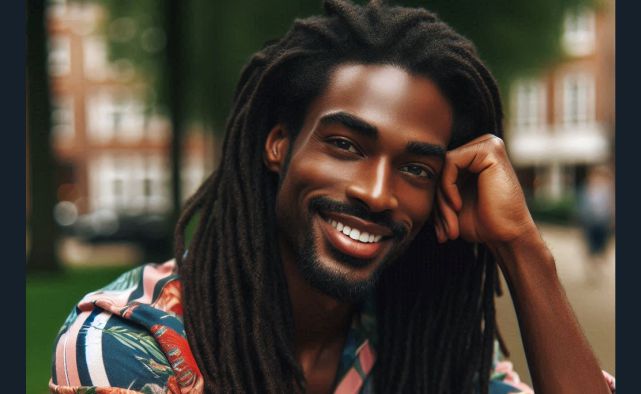
The classic freeform dreadlock style is all about embracing the natural texture and growth of your locks.
This look is ideal for those who prefer a more laid-back, authentic appearance.
Simply let your dreadlocks hang freely, allowing them to showcase their unique shape and texture.
This style requires minimal maintenance and is perfect for everyday wear. It exudes a relaxed, effortless vibe that works well with casual outfits.
2. The Neat Bun or Ponytail
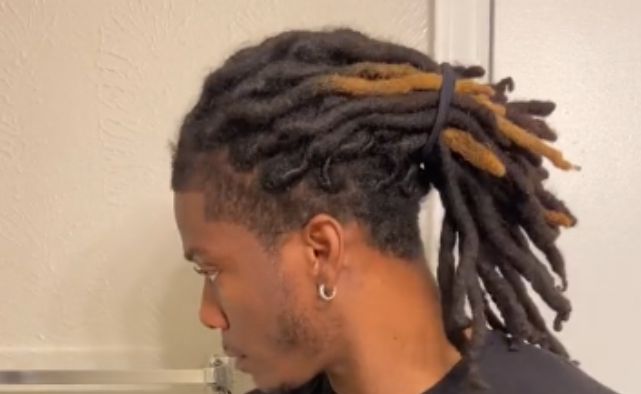
For a more polished appearance, especially in professional or formal settings, consider styling your dreadlocks into a neat bun or ponytail.
To achieve this look, gather your locks at the nape of your neck or the top of your head and secure them with a hair tie or band.
A high bun offers a modern, sophisticated look, while a low bun or ponytail can provide a more classic, refined appearance.
This style keeps your hair controlled and tidy, making it ideal for business meetings or formal events.
3. Braids and Twists
Adding braids or twists to your dreadlocks can infuse a creative flair into your hairstyle.
Braids can be incorporated into various sections of your locks, creating intricate patterns that stand out.
Twist styles, where sections of dreadlocks are twisted around each other, can also add texture and dimension.
These styles not only enhance your appearance but also keep your hair organized and manageable.
Experimenting with different braid patterns or twist techniques can help you find a look that complements your style.
4. Accessorized Dreadlocks

Accessories are a great way to personalize your dreadlocks and make a unique fashion statement.
Beads, rings, and cuffs can be threaded through individual dreadlocks, adding color and texture to your hairstyle.
Wooden or metal beads can give a rustic or edgy look, while colorful beads offer a vibrant, playful touch.
Adding accessories is an easy way to refresh your look and make your dreadlocks stand out.
5. Dyed or Highlighted Dreadlocks
For those looking to make a bold statement, consider dyeing or highlighting your dreadlocks.
Adding color can completely transform your hairstyle and reflect your personality.
From subtle highlights to full-on vibrant hues, there are endless color options to choose from.
Be sure to use hair dye products that are suitable for dreadlocks to avoid damaging the locks or causing buildup.
Regular maintenance will be necessary to keep your color looking fresh and vibrant.
6. The Tied-Back Style
If you prefer a sleek, controlled look, the tied-back style is a great option.
Gather your dreadlocks into a low ponytail or a small bun and secure them with a hair tie.
This style keeps your hair off your face and can be both practical and stylish.
It’s perfect for workouts, casual outings, or days when you want a clean, streamlined appearance.
7. The Mohawk Dreadlocks
For a more adventurous and edgy look, consider styling your dreadlocks into a mohawk.
This involves shaving or cutting the sides of your head while leaving a strip of dreadlocks running down the center.
The mohawk can be worn in various lengths and can be combined with other styles, like braids or accessories, for added flair.
This bold hairstyle makes a strong impression and is ideal for those who want to stand out.
8. The Faux Hawk
A faux hawk with dreadlocks combines the classic mohawk look with the flexibility of dreadlocks.
In this style, the center section of your dreadlocks is styled upwards or backward to mimic the appearance of a mohawk, while the sides remain styled or trimmed.
This style delivers a modern twist on the traditional mohawk and can be adapted for both casual and formal settings.
Long-Term Care and Health of Dreadlocks
To maintain the long-term health of your dreadlocks, regular care is essential. Avoid thinning and breakage by scheduling regular trims to remove split ends and prevent damage.
Wash your dreadlocks with residue-free shampoos to avoid build-up and keep your scalp healthy.
Moisturize your scalp with natural oils to prevent dryness and dandruff, and ensure your locks are thoroughly dried after washing to prevent mold and odors. A healthy diet and proper hydration also support strong, resilient hair.
Retiring your Dreadlocks
There comes a time when you may decide it is appropriate to retire your dreadlocks.
Safely removing your locks can be approached in two ways:
- Cutting or
- Combing out
If you choose to cut your dreadlocks, ensure you have sharp scissors and cut near the root but leave enough hair to style differently post-dreadlocks.
Should you choose to comb them out, soak your dreadlocks in a detangler solution to soften them and, using a fine-tooth comb, gently untangle each lock from the end towards the root, which minimizes damage?
A deliberate and well-informed approach to both care and removal can ensure that your hair remains healthy, irrespective of whether you maintain your dreadlocks or eventually transition to a different hairstyle.
Frequently Asked Questions
How do you grow and maintain dreads?
To grow and maintain dreads, use residue-free shampoos, moisturize the scalp with natural oils, and perform regular trims and root maintenance.
What makes dreads grow faster?
Dreads grow faster with a balanced diet rich in vitamins, staying hydrated, minimizing stress, and maintaining consistent hair care, including regular washing and conditioning.
How do you start and maintain locs?
Start locs using methods like freeform, twist and rip, or backcombing. Maintain them with regular washing, root maintenance, and protective sleep routines to prevent breakage.
What is the maintenance technique for dreadlocks?
Dreadlock maintenance involves regular washing with residue-free shampoo, palm rolling, root maintenance, and protecting them with a satin scarf to prevent friction and breakage.
Conclusion
Growing, maintaining, and styling the dreadlocks hairstyle is a personal journey involving foundational methods like freeform, twist and rip, or backcombing.
Key to success are patience and proper care using residue-free shampoos and natural oils to ensure a healthy scalp and uniform locks.
Regular washing, palm rolling, and root maintenance preserve dreadlock structure, while protective sleep routines prevent breakage.
Styling options vary from simple tie-ups to intricate designs, offering versatility for any occasion.
For Black men, dreadlocks are a meaningful expression of cultural identity and pride.
References:
- https://www.divinedreadlocks.com/2016/07/02/how-to-care-for-your-new-dreads/
- https://soulcap.com/blogs/editorial/5-healthy-tips-to-grow-dreadlocks-fasters
- https://lovelocsnatural.com/how-to-keep-dreads-healthy/
- https://www.youtube.com/watch?v=DUp7i77xPk0
Pyo Merez is a men’s lifestyle enthusiast and writer about the gentleman’s place and impact on society. Raised by a distinguished gentleman dad, he offers unique insights into how the mind of a gentleman works and how societal norms shape gentlemen’s identity and vice versa.
Through his insightful articles, Pyo taps into the depths of gentleman culture to provide perspectives on etiquette and manners in modern society.
